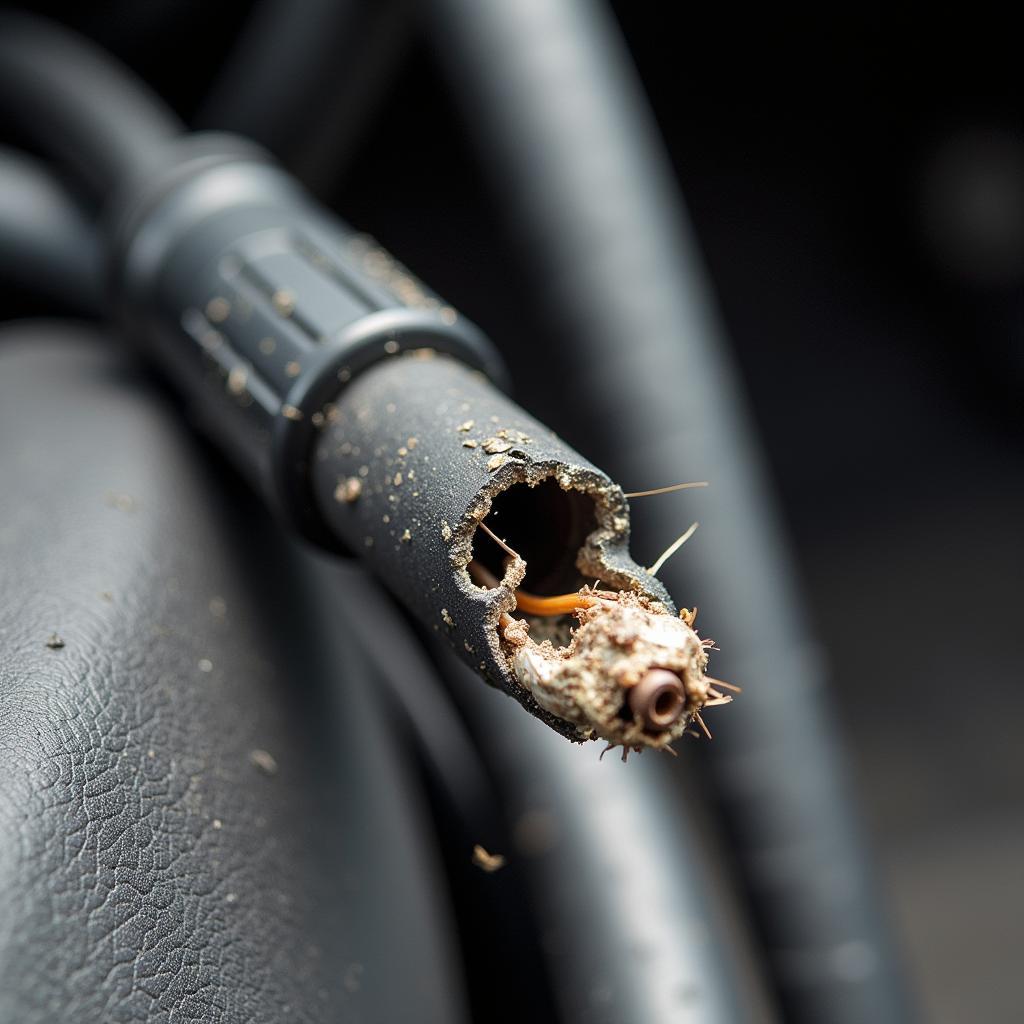Rear wheel drive (RWD) cars offer a unique driving experience, often prized for their performance and handling characteristics. However, like any mechanical system, they come with their own set of common problems. Understanding these issues can help owners maintain their vehicles effectively and address problems promptly. This article will explore these Common Problems Of Rear Wheel Drive Cars, providing valuable insights for owners, mechanics, and automotive enthusiasts.
Understanding the Basics of RWD Systems
Before diving into the common problems, it’s crucial to understand the fundamental components of a rear-wheel-drive system. The power from the engine is transmitted through the transmission, driveshaft, differential, and finally to the rear axles which turn the wheels. Each of these components plays a vital role and is susceptible to wear and tear. Knowing how these parts interact will help you pinpoint potential issues more effectively. For instance, a worn-out universal joint in the driveshaft can cause vibrations, while a failing differential can lead to noise and handling problems. Having a basic understanding of these components is essential for any RWD car owner. Want to learn more about diagnosing car issues? Check out this article on how are old car problems diagnosed.
Common Problems of Rear Wheel Drive Cars: Differential Issues
The differential, a crucial component in RWD systems, allows the rear wheels to rotate at different speeds while cornering. Common differential problems include:
- Worn gears: Over time, the gears within the differential can wear down, leading to whining or humming noises, especially during acceleration or deceleration.
- Leaking seals: The differential relies on seals to contain the lubricating fluid. Leaks can lead to low fluid levels, causing increased wear and potential damage to the differential.
- Bearing failure: The bearings within the differential support the rotating components. Worn bearings can cause grinding noises and vibrations.
Common Problems of Rear Wheel Drive Cars: Driveshaft Troubles
The driveshaft transmits power from the transmission to the differential. Common driveshaft issues include:
- U-joint wear: The universal joints (U-joints) allow the driveshaft to flex and accommodate changes in angle. Worn U-joints can cause vibrations, especially at higher speeds.
- Driveshaft imbalance: An unbalanced driveshaft can also cause vibrations, which can be felt throughout the vehicle.
- Center bearing failure (if applicable): Some driveshafts have a center bearing for added support. Failure of this bearing can lead to noise and vibrations. Car repair garages often encounter these problems. Learn more about common car repair garage problems.
Dealing with Axle Problems in RWD Cars
The axles connect the differential to the rear wheels, transferring power and allowing them to rotate. Common axle issues include:
- Bent or broken axles: Severe impacts or excessive stress can bend or break an axle, leading to loss of control and immobility.
- Worn axle bearings: Worn axle bearings can cause grinding noises and vibrations.
- CV joint issues (for independent rear suspension): Constant velocity (CV) joints are used in independent rear suspensions and can wear out over time, leading to clicking or popping noises, especially when turning. Have you ever had issues with rental cars? Check out this resource about problems with car rental companies.
“Regular maintenance, including fluid changes and inspections, is crucial for preventing many of these common RWD problems,” says John Miller, a seasoned automotive technician with over 20 years of experience. “Early detection can save you from costly repairs down the road.”
Addressing Traction and Handling Challenges in RWD
RWD cars can be more prone to oversteer, especially in wet or icy conditions. This is because the weight transfer during acceleration can reduce traction on the rear wheels. Proper tire maintenance and driving techniques can mitigate these risks. Additionally, using winter tires in snowy or icy conditions can significantly improve traction and safety. Some car models may have specific paint problems. For example, see this article on honda car paint problems.
“Understanding the limitations of your RWD vehicle in different driving conditions is paramount,” adds Sarah Chen, a certified driving instructor specializing in performance driving techniques. “Smooth inputs and anticipating potential traction loss can help you maintain control and avoid dangerous situations.”
Conclusion
Rear wheel drive cars offer unique driving dynamics, but they come with their own set of common problems. By understanding these potential issues, including differential, driveshaft, and axle problems, you can better maintain your RWD vehicle and address problems promptly. Regular maintenance and proactive inspections are key to preventing costly repairs and ensuring a smooth and enjoyable driving experience. Contact us at AutoTipPro at +1 (641) 206-8880 or visit our office at 500 N St Mary’s St, San Antonio, TX 78205, United States for assistance with any common problems of rear wheel drive cars you may be experiencing.







Leave a Reply